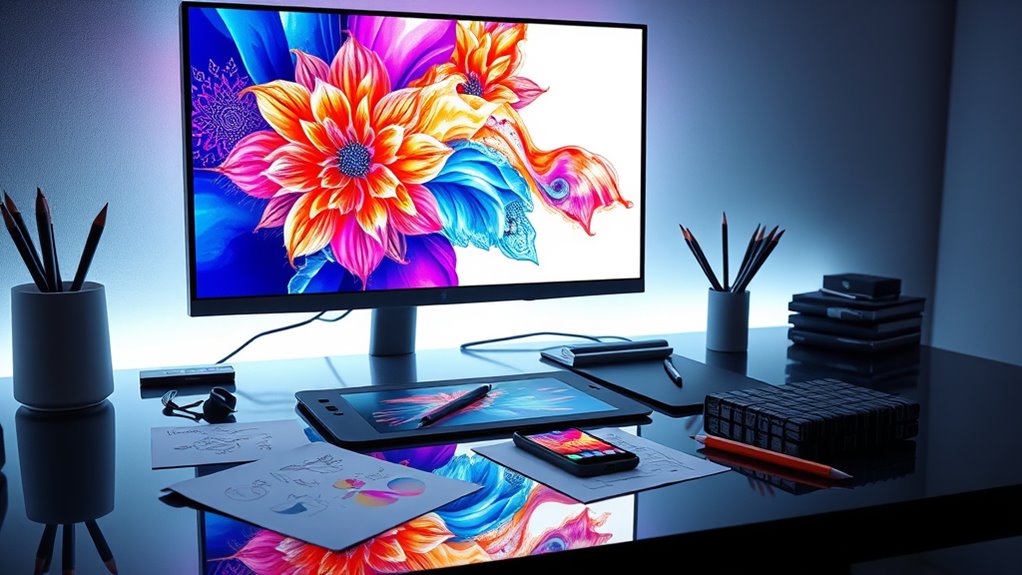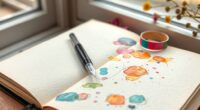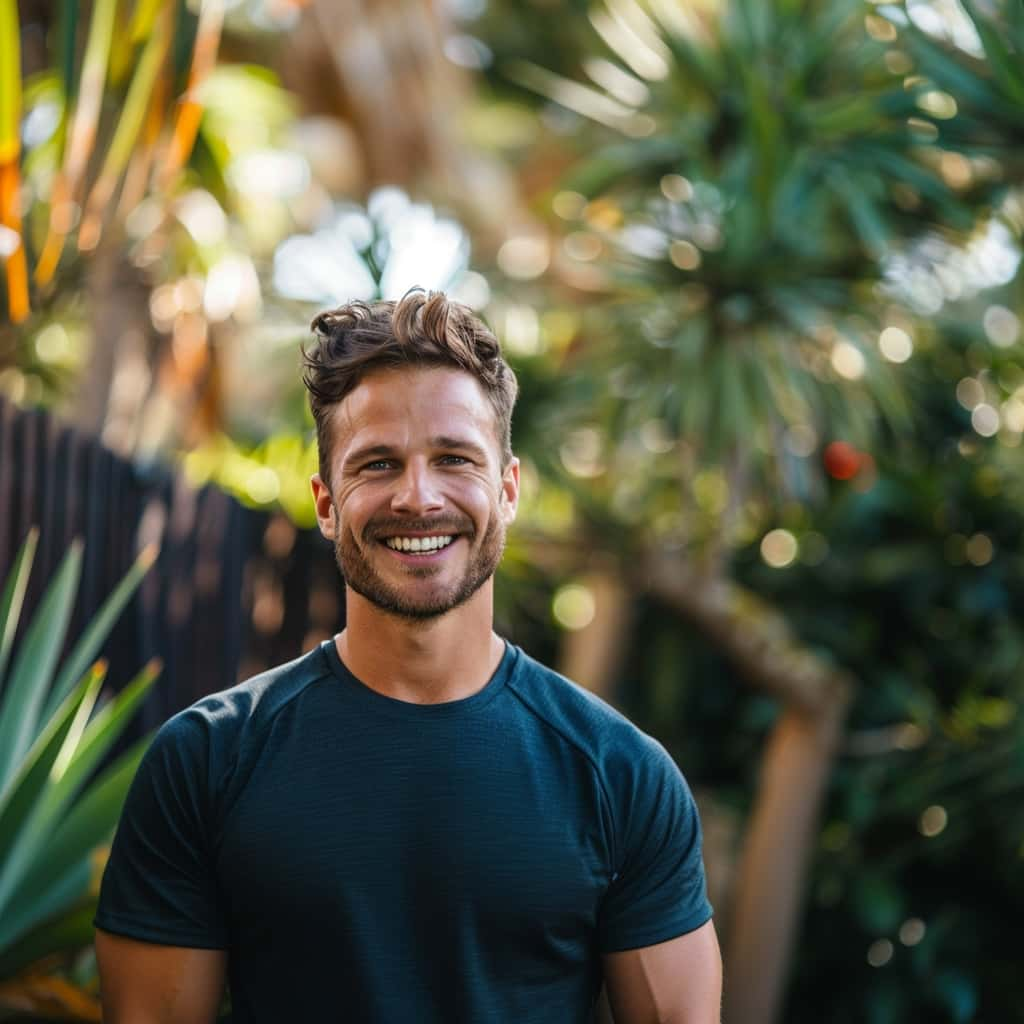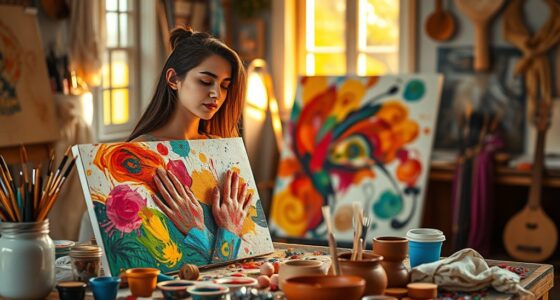AI tools for artists and designers help you create faster and more innovative work. They generate unique images, suggest color palettes, and automate routine tasks like color correction or editing. These tools can inspire new ideas, expand your creative options, and improve workflow efficiency. By integrating AI into your process, you can experiment with different styles and push your projects further. Keep exploring how these tools can elevate your art and design skills even more.
Key Takeaways
- AI tools automate repetitive tasks like color correction and image enhancement, boosting workflow efficiency for artists and designers.
- They generate unique visual options and variations, inspiring new styles and helping overcome creative blocks.
- AI-powered plugins suggest color palettes, refine details, and assist in sketching, seamlessly integrating into existing creative processes.
- Using AI as a creative extension supports experimentation and elevates project quality while maintaining ethical considerations.
- Staying informed about AI biases, security, and ethical issues ensures responsible and trustworthy application of AI tools in art and design.
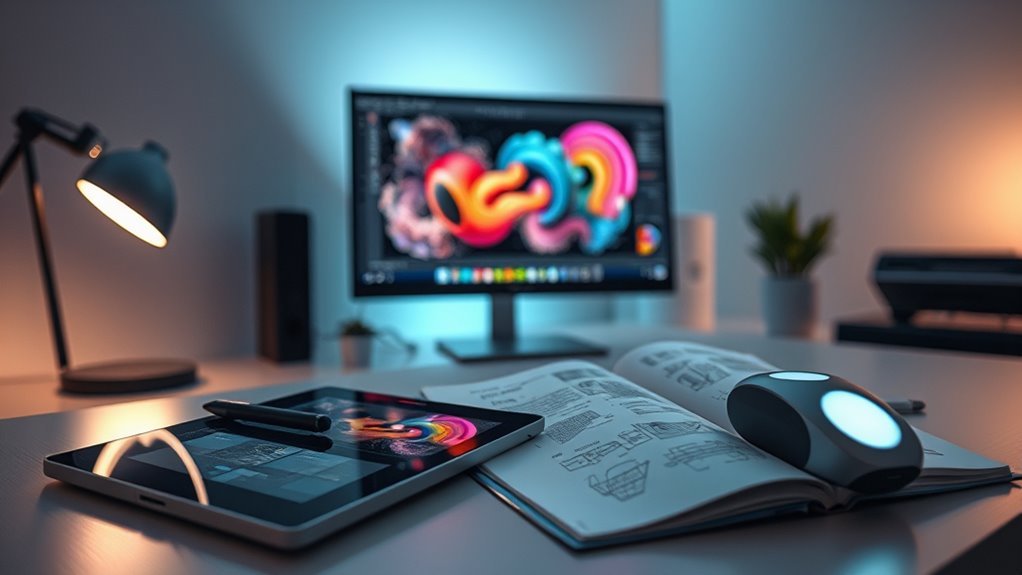
Have you ever wondered how artificial intelligence is transforming the way artists and designers create? AI tools are revolutionizing the creative process, making it more accessible and efficient. One of the most exciting developments is AI generated art, where algorithms produce unique images, patterns, and designs based on your input or existing data. This technology allows you to explore new styles and ideas that might have taken hours or days to develop manually. Instead of starting from scratch, you can seed your project with AI-generated elements that serve as a foundation or inspiration, saving you time and expanding your creative horizons.
AI-generated art sparks new creative possibilities by providing unique images and ideas to jumpstart your projects.
Integrating AI into your creative workflow isn’t just about generating art; it’s about seamless collaboration between human imagination and machine precision. Creative workflow integration involves embedding AI tools into your existing processes, whether you’re sketching, editing, or finalizing designs. This integration enhances productivity by automating repetitive tasks, such as color correction, image enhancement, or pattern creation. For instance, you might use an AI-powered plugin that suggests color palettes based on your artwork or automatically refines details, allowing you to focus on the conceptual aspects of your project. The goal is to make technology work for you without disrupting your natural workflow.
By incorporating AI generated art into your toolkit, you gain faster access to an array of visual options, pushing your creative boundaries further. These tools can generate variations of your work, helping you experiment with different styles and compositions effortlessly. They also assist in overcoming creative blocks by offering fresh ideas when you’re stuck. *Furthermore*, AI’s ability to analyze large datasets allows it to recognize patterns and trends, giving you insights that can inform your creative decisions. As a result, your projects become more dynamic and innovative, with the potential to produce work that stands out in a crowded marketplace.
The key to leveraging AI in your creative process is understanding how to integrate it in a way that complements your skills rather than replaces them. When used thoughtfully, AI generated art acts as an extension of your creativity, not a substitute. Whether you’re a digital painter, graphic designer, or mixed media artist, these tools can streamline your workflow, inspire new ideas, and elevate your finished products. As AI continues to evolve, it’s important to stay curious and experiment with different platforms and techniques—your creative potential grows exponentially when technology and human ingenuity work hand-in-hand. Additionally, staying informed about AI vulnerabilities and biases ensures that your creative work remains ethical and trustworthy as you incorporate these powerful tools.
Frequently Asked Questions
How Do AI Tools Impact Traditional Artistic Skills?
AI tools impact your traditional artistic skills by accelerating your artistic skill evolution and transforming your creative process. They allow you to experiment more freely, blending new techniques with classic methods. While some may worry about skill erosion, you can use AI to enhance your craftsmanship, learn innovative styles, and push boundaries. This fusion of technology and tradition ultimately helps you grow as an artist and expand your creative possibilities.
Can AI Generate Original Artwork Without Human Input?
AI can generate artwork without human input, but it’s not truly original—more like a mirror reflecting existing ideas. Its originality depends on algorithms and data fed into it, yet it still needs human collaboration to add meaning and context. Think of AI as a powerful tool that enhances your creativity, not replaces it. While AI can surprise you, genuine originality still relies on your vision and input.
What Are the Best AI Tools for Beginners?
You should start with user-friendly AI tools that offer customization options and beginner tutorials, making it easier to learn. Tools like DALL·E, Artbreeder, and Canva’s AI features are perfect for beginners. They allow you to experiment with AI-generated art, customize outputs, and follow tutorials that guide you through the process. These tools make it simple to develop your skills while exploring AI-driven creativity without feeling overwhelmed.
How Do Artists Monetize Ai-Generated Art?
You can monetize your AI-generated art by selling it on AI art marketplaces like OpenSea or ArtStation, where you can reach a broad audience. Make certain you understand the royalty structures, which often give you a percentage from each sale, providing ongoing income. Promote your work on social media and build a portfolio to attract buyers, making it easier to turn your AI art into a profitable venture.
Are AI Tools Ethically Suitable for Creative Industries?
Think of AI tools as a double-edged sword—powerful yet needing careful handling. They can be ethically suitable if you respect artistic authenticity and protect intellectual property rights. You must guarantee your work remains genuine and transparent, avoiding plagiarism or misrepresentation. When used responsibly, AI enhances creativity without compromising ethical standards, making it a valuable ally rather than a threat in the creative industries.
Conclusion
Embracing AI tools can truly open new doors for your creativity and streamline your workflow. These innovations aren’t just bells and whistles—they’re powerful allies that can elevate your artistry to new heights. While it’s easy to get caught up in the hype, remember that technology is only as good as the hands that wield it. By blending your unique vision with AI’s capabilities, you’ll find yourself ahead of the curve and ready to make magic happen.
